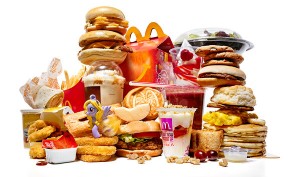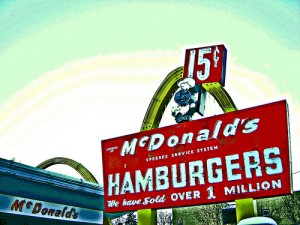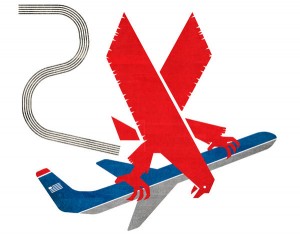Most people associate McDonalds with the traditional meat and potatoes menu that they started with, the traditional cheeseburger and french fries. However, in recent times the Oak Brook based chain, with its 68 million daily customers in over 119 countries has expanded their menu to include items that can satisfy all different types of taste buds By implementing these new items, like the snack wraps, angus burgers, and steak bagels McDonalds has tried to cover all territories of the fast food market. They have even offered rib sandwiches and the most recent offering of mighty wings (traditional chicken wings). Since 2007, McDonalds has added over 60 items to their menu.
Lately, however McDonalds has started to eliminate items off of their menu. Starting with the Angus Burger last month, McDonalds claims that 4 more items will soon be off their menu including the Caesar salads, McSkillet Burritos, Southern Style Biscuits and steak bagels. This is in an effort to better manage a menu that has grown in the past 7 years.
Because McDonalds is such an excellent example of quality and process management, this article serves as a good example to look at the way the McDonalds handles and controls its processes. The traditional idea of McDonalds was that it was a company that could do the basics and do them better than anyone else meaning serve traditional Cheeseburgers and fries in a quick, clean, and friendly restaurant and atmosphere better than any of its competitors. Clearly it has done this as it is the biggest fast food chain in the world and as a matter of necessity for an ever expanding target market, the menu has swollen to a size the original owners would have never thought.
Therein lies obvious potential problems which I believe McDonalds has realized. By having so many different products, it becomes difficult to effectively offer the same consistent quality of all of these items across the board. This I believe is because of the numerous different processes each different item must go through before it reaches the consumer. This ranges from ingredient storage, cooking, preparing, and delivery. This also can cause process variation in McDonalds training process as the menu becomes harder to master for its employees. With new items so frequently being added, McDonalds lends itself to a host of possible errors in everyday preparation of these items to its customers.
What McDonalds is doing by reducing its menu items slowly is going back to basics somewhat. By creating a more manageable menu, McDonalds can better focus on improving on its continued improvement of processes already associated with existing menu items. By Improving their base menu items, McDonalds should see an increase in customer satisfaction across the multiple countries it occupies.
Do you think that eliminating the numerous menu items listed and more will help McDonalds achieve a higher quality standard for its other items and improve more so on its current operations? How else could this move help McDonalds achieve higher quality across the company.
Sources:
Crains ” More food disappearing from McDonalds”
http://www.chicagobusiness.com/article/20130517/BLOGS08/130519794/more-food-disappearing-from-mcdonalds-menu
” WikiPedia McDonalds”
http://en.wikipedia.org/wiki/McDonald’s
Bloomberg New “McDonalds Cutting its Menu”
http://finance.yahoo.com/news/mcdonalds-reduce-menu-bloomberg-reports-101556997.html
Business Insider “McDonalds to Start Cutting Menu Items”
http://www.businessinsider.com/mcdonalds-to-start-cutting-menu-items-2013-5


